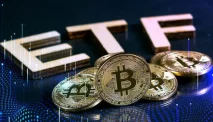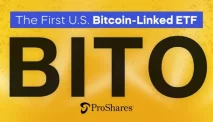The Bitcoin protocol consists of several components, such as:
- Nodes: Nodes are computers that run the Bitcoin software and validate transactions and blocks according to the consensus rules. Nodes can be full nodes, which store the entire history of the blockchain, or light nodes, which only store a subset of the blockchain data.
- Transactions: Transactions are transfers of value between users on the Bitcoin network. Transactions consist of inputs and outputs, which specify the source and destination of the funds, as well as signatures, which prove the ownership and authorization of the funds.
- Blocks: Blocks are collections of transactions that are verified by nodes and appended to the blockchain. Blocks have a header that contains metadata, such as the timestamp, nonce, difficulty target and hash of the previous block.
- Blockchain: Blockchain is a linear sequence of blocks that forms a complete and chronological record of all transactions that have ever occurred on the Bitcoin network. The blockchain is maintained by nodes through a process called mining.
- Mining: Mining is a process where nodes compete to solve a cryptographic puzzle that involves hashing the block header with a variable nonce. The first node that finds a valid nonce that satisfies the difficulty target broadcasts its block to the network and receives a reward in bitcoins. Mining secures the network by making it costly and difficult to alter or reverse transactions.
How does Litecoin Work?
Litecoin works in a similar way as Bitcoin, but with some differences in terms of parameters and features. Some of these differences are:
- Hashing algorithm: Litecoin uses Scrypt as its hashing algorithm, while Bitcoin uses SHA-256. Scrypt is more memory-intensive than SHA-256, which makes it harder to perform parallel computations on specialized hardware such as ASICs (application-specific integrated circuits). This aims to prevent mining centralization and encourage more participation from ordinary users.
- Block time: Litecoin has a block time of 2.5 minutes, while Bitcoin has a block time of 10 minutes. This means that transactions are confirmed faster on the Litecoin network, which improves user experience and security.
- Block reward: Litecoin has a block reward of 12.5 LTC per block, while Bitcoin has a block reward of 6.25 BTC per block. The block reward halves every 840,000 blocks (approximately every four years) on both networks, until it reaches zero when all coins are mined.
- Total supply: Litecoin has a total supply of 84 million coins, while Bitcoin has a total supply of 21 million coins.
- Difficulty adjustment: Litecoin adjusts its difficulty every 2,016 blocks (approximately every 3.5 days), while Bitcoin adjusts its difficulty every 2,016 blocks (approximately every two weeks). The difficulty determines how hard it is to find a valid nonce for a block, and it is adjusted based on the average time it took to find the previous 2,016 blocks. The faster the blocks are found, the higher the difficulty, and vice versa.
- SegWit: Litecoin activated SegWit in May 2017, while Bitcoin activated SegWit in August 2017. SegWit is a protocol upgrade that separates the transaction data from the signature data, allowing more transactions to fit in a block and reducing the size and cost of transactions. SegWit also enables the activation of second-layer solutions such as Lightning Network, which can facilitate instant and low-cost micropayments.
- Lightning Network: Litecoin has been one of the first cryptocurrencies to adopt and support Lightning Network, a decentralized network of payment channels that operate on top of the Litecoin blockchain, allowing users to send and receive payments without broadcasting them to the whole network. Lightning Network can increase the speed, scalability and privacy of transactions, as well as enable cross-chain atomic swaps with other cryptocurrencies.
- MimbleWimble: Litecoin is currently working on implementing MimbleWimble, a privacy-enhancing technology that uses elliptic curve cryptography to hide the amounts and addresses involved in transactions, while still allowing verification by nodes. MimbleWimble also reduces the size of the blockchain by removing unnecessary data, improving its efficiency and scalability. MimbleWimble is implemented on Litecoin as an extension block, which is a parallel chain that runs alongside the main chain and periodically syncs with it.
Litecoin Market
What is the Current Market Capitalization of Litecoin?
The current market capitalization of Litecoin is $6.66 billion USD as of January 14, 2022. This means that the total value of all Litecoins in circulation is $6.66 billion USD. Litecoin ranks as the 11th largest cryptocurrency by market capitalization among more than 13,000 cryptocurrencies listed on CoinMarketCap.
What is the Trading Volume of Litecoin?
The trading volume of Litecoin is $583.55 million USD as of January 14, 2022. This means that the total amount of Litecoins traded in the past 24 hours is $583.55 million USD. Litecoin ranks as the 12th most traded cryptocurrency by volume among more than 13,000 cryptocurrencies listed on CoinMarketCap.
What are the Top Exchanges that List Litecoin?
Litecoin is listed on more than 400 exchanges around the world, according to CoinMarketCap. Some of the top exchanges that list Litecoin are:
- Binance: Binance is the world’s largest cryptocurrency exchange by trading volume and liquidity. It offers a variety of trading pairs, products and services for Litecoin, such as spot trading, futures trading, margin trading, lending, staking and more.
- OKX: OKX is one of the leading cryptocurrency exchanges that provides advanced financial services for Litecoin and other cryptocurrencies. It offers spot trading, derivatives trading, margin trading, lending, mining and more.
- Deepcoin: Deepcoin is a cryptocurrency exchange that focuses on providing secure, fast and convenient trading services for Litecoin and other cryptocurrencies. It offers spot trading, contract trading, leveraged trading and more.
- Bitrue: Bitrue is a cryptocurrency exchange that aims to provide simple and reliable trading services for Litecoin and other cryptocurrencies. It offers spot trading, margin trading, lending, staking and more.
- BingX: BingX is a cryptocurrency exchange that specializes in providing high-performance and low-latency trading services for Litecoin and other cryptocurrencies. It offers spot trading, futures trading, options trading and more.
Litecoin Investment
Is Litecoin a Good Investment?
Litecoin can be considered a good investment for several reasons:
- It has a strong track record of innovation and adoption since its inception in 2011
- It has a loyal and active community of users, developers and merchants who support its growth and development
- It has a solid technical foundation that enables fast, secure and low-cost transactions
- It has a limited supply of 84 million coins that creates scarcity and demand
- It has a high compatibility and interoperability with other cryptocurrencies and platforms
- It has a potential for future growth and improvement with new technologies and features such as Lightning Network and MimbleWimble
However, investing in Litecoin also involves some risks:
- It faces competition from other cryptocurrencies that offer similar or better features
- It is subject to market volatility and price fluctuations due to supply and demand factors
- It is exposed to regulatory uncertainty and legal challenges in different jurisdictions
- It is vulnerable to cyberattacks and technical glitches that may compromise its security or functionality
Therefore, investing in Litecoin requires careful research, analysis and risk management.
What are the Risks of Investing in Litecoin?
Some of the risks of investing in Litecoin are:
- Market risk: Litecoin’s price is determined by the market forces of supply and demand, which can be influenced by various factors such as news, events, sentiment, speculation, manipulation and more. Litecoin’s price can change rapidly and unpredictably, resulting in losses or gains for investors.
- Regulatory risk: Litecoin’s legal status and regulation vary depending on the country or region. Some countries or regions may have favorable or supportive policies for Litecoin, while others may have restrictive or prohibitive policies. Litecoin’s regulation may also change over time, creating uncertainty and challenges for investors.
- Security risk: Litecoin’s security depends on the integrity and reliability of the network, the software and the hardware. Litecoin’s network, software and hardware may be subject to cyberattacks, bugs, errors, malfunctions or failures that may compromise its security or functionality. Investors may lose their Litecoins if they store them in insecure wallets or platforms, or if they lose their private keys or passwords.
- Technology risk: Litecoin’s technology is constantly evolving and improving, which may create opportunities or challenges for investors. Litecoin’s technology may face competition from other technologies that offer similar or better features. Litecoin’s technology may also encounter problems or limitations that may affect its performance or usability.
How can I Buy Litecoin?
There are several ways to buy Litecoin, such as:
- Buying Litecoin with fiat currency: Some exchanges allow users to buy Litecoin directly with fiat currency, such as USD, EUR, IDR and more. Users need to register an account on the exchange, verify their identity and payment method, and place an order to buy Litecoin at the current market price or a specified price.
- Buying Litecoin with cryptocurrency: Some exchanges allow users to buy Litecoin with other cryptocurrencies, such as BTC, ETH, USDT and more. Users need to register an account on the exchange, deposit their cryptocurrency to the exchange wallet, and place an order to buy Litecoin at the current market price or a specified price.
- Buying Litecoin with credit/debit card: Some platforms allow users to buy Litecoin with their credit/debit card, such as Simplex, MoonPay and more. Users need to register an account on the platform, verify their identity and card details, and place an order to buy Litecoin at the current market price or a specified price.
- Buying Litecoin with PayPal: Some platforms allow users to buy Litecoin with their PayPal account, such as eToro, Paxful and more. Users need to register an account on the platform, verify their identity and PayPal details, and place an order to buy Litecoin at the current market price or a specified price.
Conclusion
Litecoin is a cryptocurrency that is faster, cheaper and more secure than Bitcoin. It is based on the same technology as Bitcoin, but with some differences that make it better for everyday transactions. Litecoin has been around since 2011 and has a loyal and active community that supports it. It has a limited supply of 84 million coins that makes it valuable. It can work with other cryptocurrencies and platforms. It can also improve with new technologies and features in the future.






